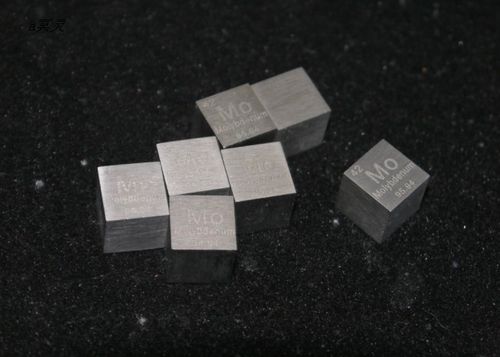Which form of Molybdenum is the best?

Molybdenum is a silvery transition metal. It has a very high resistance to corrosion and an extremely high melting point. It has an atomic number of 42, an atomic mass of 95.96, a density of 10.22 g/cm3, and a melting point of 2623°C.
Molybdenum metal lies in the second transition series of the periodic table and is also an outstanding refractory metal. Molybdenum's thermophysical property makes it resistant to heat. It has a relatively high density and a low coefficient of thermal expansivity. Molybdenum has a low relative density, which gives it good ductility. It remains the best refractory material used for most manufacturing applications.
Very pure Molybdenum can withstand molten and non-oxidizing acids but corrodes in alkalis and other oxidizing materials. For instance, molybdenum exposed to air at a temperature that is over 760°C will form an oxide layer, which will expose the Molybdenum material to corrosion. Molybdenum works best in inert/vacuum environments or better still as an alloying element.
Uses of Molybdenum
Molybdenum is available in the powdery firm. Manufacturers make items by compressing the molybdenum powders at extremely high pressure. Molybdenum is added to steel to make solid alloys. This increases the strength, hardness, electrical conductivity, and resistance of the steel metal, making it a suitable alloy for producing heating elements, drills, and saw blades.Different Forms of Molybdenum
1. Molybdenum Tube
Molybdenum tubes are formed from forged rods and by direct sintering. Tubes with an outer diameter of 60mm are usually machined and gun-drilled from the forged rod. Molybdenum tubes, otherwise known as Moly Tubes with larger diameters, are sintered per size directly. Moly Tube is effective for use in high-temperature furnace applications. Due to their high tolerance for heat and stress, they are used in the medical, aerospace, and oil and gas industries. It is resistant to corrosion, and the high refractory component makes it useful in areas requiring high stiffness and low weight.2. Molybdenum Rod
Molybdenum rods are refractory metals, and they have a very high melting temperature of 4760℉. Molybdenum rods have excellent strength and stiffness, even at high temperatures. They have good machinability and are easily fabricated. Moly rods are ductile and highly resistant to corrosion. Moly rods are used as heat shields, and they are good semiconductor base plates. They have good electrical conductivity and a very low thermal expansion, making them suitable for use as filaments, ribbons, and wires for lighting.3. Molybdenum Wires
Molybdenum wires, sometimes called Moly wires by manufacturers, have high refractory properties, making them suitable for applications requiring high thermal resistance. Moly wires have very high strength and stiffness even at extreme temperatures. They are ductile and resistant to corrosion. Moly wires have good electrical conductivity and low thermal expansion. Molybdenum wires have different applications; they are used in hot zones for high-temperature furnaces. They are used for making sputtering targets for coating solar cells and flat screens. Molybdenum rods have good machinability and possess high thermal conductivity.4. Molybdenum Discs
Molybdenum discs have similar thermal expansion and properties to silicon. They are mostly used as contact materials in silicon control rectifier diodes, transistors, and thyristors. They are suitable semiconductor materials used in semiconductor devices and heat sink bases. The diameter of these discs ranges from 5 to 100 millimeters, and their thickness ranges from 0.1 to 4.0 millimeters. They have excellent shielding capability and a density of 10.2g/cm3. There are several applications of Molybdenum discs. They are used as an electric component of high power and high reliability for heat dissipation.5. Molybdenum pins
Molybdenum pins have a smooth and bright surface used to make automotive halogen lamps. They are usually 20mm in length. Molybdenum pins are free of dirt, stain, oxides, scratches, or damage. They have a tensile strength of 900N/mm2 and elongate to about 15% -- 20% of their length. They have a tolerance of 2% and have standard diameters of 0.6mm, 0.5mm, and 0.4mm.6. Molybdenum Sheet
Molybdenum sheet has broad application in lighting, vacuum, coating, medical equipment, semiconductor, glass fiber, and electrode. They are suitable for making heater shielding in a vacuum resistance furnace. They have different applications and are used to manufacture electric light source parts and components of vacuums and electric power semiconductors. Molybdenum sheets are also used in making Molybdenum boats, heat shields, and heat bodies.Final Thoughts
Molybdenum disc is the best form of Molybdenum due to its wide applications in different electrical components such as silicon control rectifiers, diodes, transistors, and thyristors. Refractory metals such as Molybdenum have broad applications in areas where construction materials should not be deformed or affected by high temperatures. At Advanced Refractory Metals, we provide high-quality refractory metals that meet all industrial applications. Our wires, plate, sheets, and rods made from quality Molybdenum metals, are made with the highest standards in the USA. For further inquiries, call us at (949) 407-8904 and speak to any of our professionals.
REVIEWS
{{viewsNumber}}
Thought On "{{blogTitle}}"
{{item.created_at}}
{{item.content}}
LEVE A REPLY
Comment
Name
*
Email
*
{{item.children[0].created_at}}
{{item.children[0].content}}
{{item.created_at}}
{{item.content}}
More Replies
LEAVE A REPLY
Comment
*
Name
*
Email
*
SUBSCRIBE OUR NEWSLETTER
Your Name
*
Your Email
*
Success ! You're now subscribed
You've been successfully subscribed! Check your inbox soon for great emails from this sender.
Our Latest News






